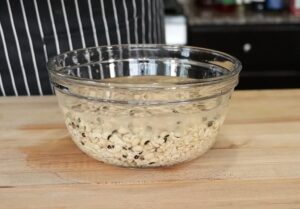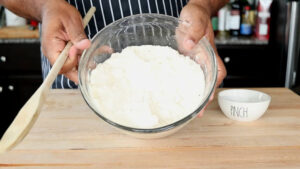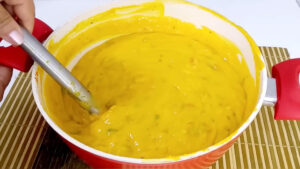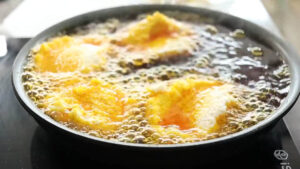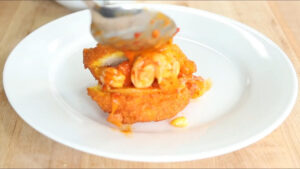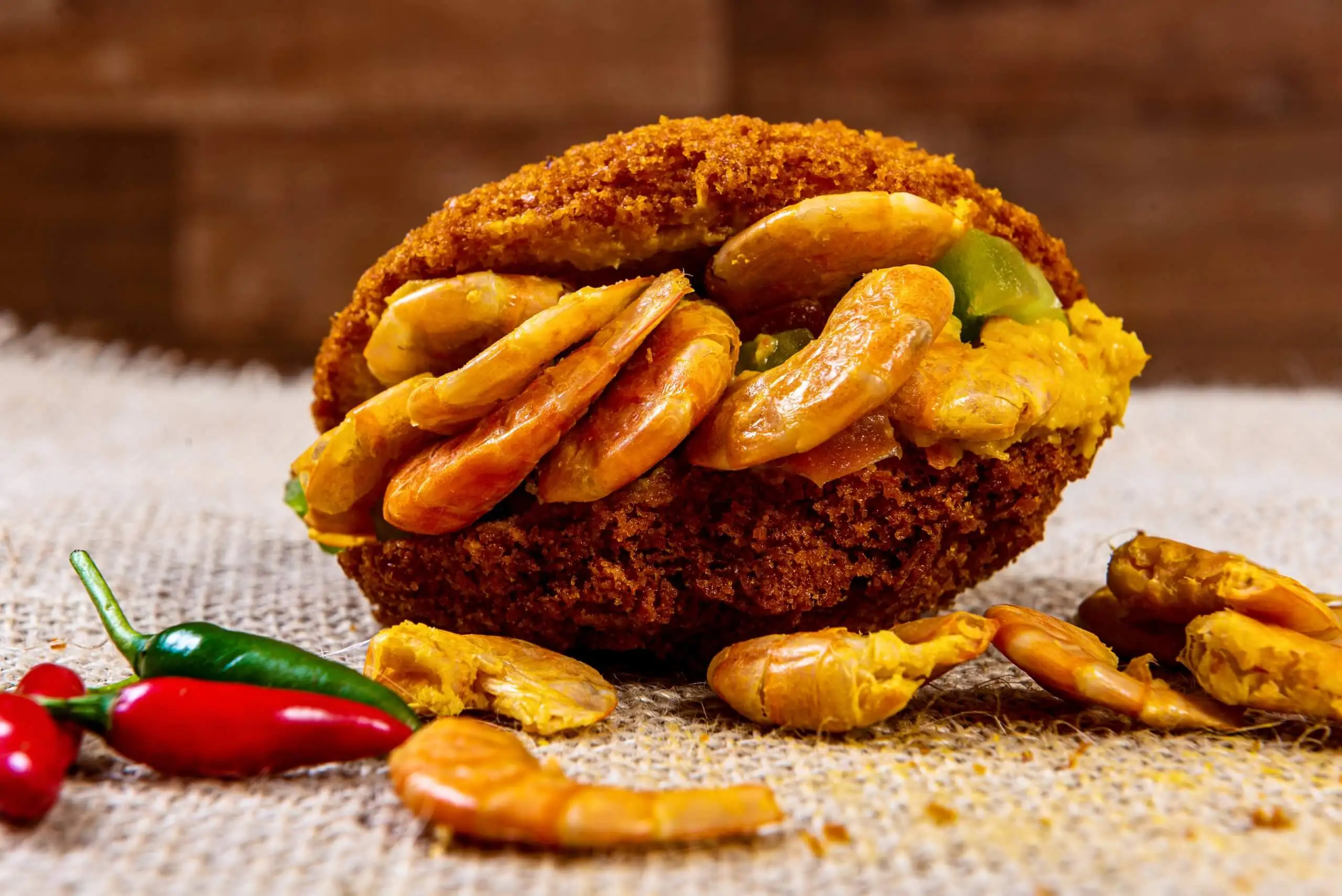
Over the past few weeks, I’ve been on an incredible journey through the flavors of Brazil. I played around with many recipes.
Now, I’m excited to share Acarajé. This dish so popular that they even have a festival dedicated to it. Get ready to fry up some magic and experience a true taste of Brazil!
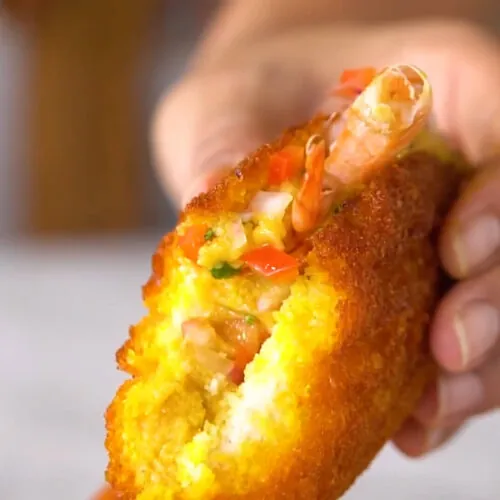
Recipe For Acarajé
Equipment
- 1 Food processor or blender
- 1 Large mixing bowls
- 1 Fine-mesh strainer
- 1 Wooden spoon
- 1 Large pot or deep fryer
- 1 Slotted spoon
- 1 Knife and cutting board
Ingredients
For the Acarajé Fritters
- 2 Cups Dried black-eyed peas
- 1 Whole Large Onion chopped
- 2 Cloves Garlic Minced
- Salt To taste
- Dendê oil For frying
For the Vatapá Filling
- 2 Slices White Bread Soaked in 1 cup coconut milk
- ½ Cup Ground Peanuts
- ½ Cup Ground Cashews
- 1 Whole Small Onion Chopped
- 1 Clove Garlic Minced
- 1 Tbsp Fresh Ginger Grated
- ¼ Cup Dried Shrimp Soaked in warm water and drained
- 1 Tbsp Dendê oil
- Salt and pepper To taste
For the Acarajé Fritters
- Fresh shrimp Cooked and peeled
- Hot pepper sauce or chopped chili peppers
- Lime wedges For serving
Instructions
- Prepare the Black-Eyed Peas:Place the dried black-eyed peas in a large bowl and cover with water. Soak for at least 8 hours or overnight. Drain, rub the peas between your hands to remove the skins, rinse thoroughly, and drain well.
- Make the Batter:In a food processor or blender, blend the peeled black-eyed peas, chopped onion, and minced garlic into a smooth, thick paste. Transfer to a bowl, add salt to taste, and beat with a wooden spoon for a few minutes to make the batter light and fluffy.
- Prepare the Vatapá:Blend the soaked bread with coconut milk in a food processor until smooth. Add ground peanuts, ground cashews, chopped onion, garlic, ginger, and soaked dried shrimp, and process into a thick paste.Heat dendê oil in a pan over medium heat, add the vatapá paste, and cook, stirring frequently, until thickened and fragrant (about 10-15 minutes). Season with salt and pepper and set aside.
- Fry the Acarajé:Heat enough dendê oil in a large pot or deep fryer to reach 350°F (175°C). Drop spoonfuls of batter into the hot oil, being careful not to overcrowd.Fry in batches until golden and crispy on the outside, about 4-5 minutes per batch. Remove with a slotted spoon and drain on paper towels.
- Assemble and Serve:Split each acarajé open, add a generous spoonful of vatapá, a few cooked shrimp, and top with hot pepper sauce or chopped chili peppers. Serve immediately with lime wedges for extra zest.
Video
Notes
- Peeling Black-Eyed Peas: Removing the skins is key for a smooth batter. After soaking, rub the peas under running water so the skins float and separate easily.
- Dendê Oil Substitute: Can’t find dendê oil? Use vegetable oil for frying, though it won’t be as authentic. Mix in a bit of annatto oil for color and a closer taste.
- Make Ahead: Prepare the black-eyed pea batter and vatapá filling in advance and store in the refrigerator. Fry the acarajé just before serving for the best texture.
How to Properly Prepare Black-Eyed Peas?
Removing the skins from the black-eyed peas might seem like a tedious task, but it’s essential for a smooth and consistent batter.
Here’s a foolproof way to do it:
- Soak Overnight: Place the peas in a large bowl and cover with plenty of water. Let them soak overnight to soften.
- Rubbing Technique: After soaking, drain the peas and place them back in the bowl. Rub the peas vigorously between your hands to loosen the skins. Fill the bowl with water, and the skins should float to the surface, making them easy to skim off.
- Repeat: Repeat the process until most of the skins are removed. This step ensures that your Acarajé will have a velvety texture when fried.
Variations of Acarajé You Must Try
While traditional Acarajé is stuffed with vatapá, shrimp, and hot sauce, there are many creative ways to put your own spin on it:
- Vegetarian Acarajé: Skip the shrimp and make a plant-based vatapá using roasted vegetables or tofu. You can also add sautéed okra or fried eggplant for extra flavor.
Fun Fact: Did you know that Nikola Tesla, one of the greatest minds of all time, was a vegetarian most of his life?
- Seafood Medley: Instead of just shrimp, consider stuffing your Acarajé with a mix of seafood like shrimp, calamari, crab meat, or even scallops for a luxurious twist.
- Spicy Variations: Add chopped chili peppers to the batter for a spicier fritter, or infuse the vatapá with extra hot sauce for a serious kick.
Final Words
Acarajé is a popular and delicious Brazilian street food, known for its crispy texture and flavorful fillings.
Enjoyed in cities across Brazil, it’s a perfect way to experience the country’s vibrant and diverse cuisine. Whether you’re preparing it for a gathering or just for a fun kitchen adventure, Acarajé will bring the rich, bold flavors of Brazil right to your plate.
I hope you enjoy making this dish and sharing it with friends or family. Feel free to let me know how it turns out and any variations you tried!

